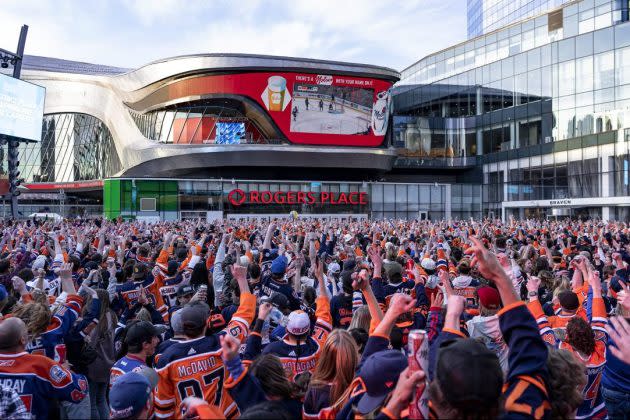The Edmonton Oilers have enjoyed plenty of riches on the ice in recent years with Connor McDavid and Leon Draisaitl, who ranked first and third on NHL Network’s preseason list of the sport’s best players. The duo has Edmonton in the Western Conference Finals for the second time in three seasons, and the club is tied 1-1 in its series against the Dallas Stars.
The small-market Oilers are also thriving off the ice, with Rogers Place one of the NHL’s most prosperous stadiums and the surrounding 25-acre mixed-use sports and entertainment development, the ICE District, the second largest. largest in North America, only behind Hudson Yards in New York.
More from Sportico.com
“The ICE District is really the epicenter of all the activity in our city,” Oilers Entertainment Group executive Tim Shipton said in a phone interview. “It’s the place where people want to be.”
OEG owns the Oilers, the ICE District, the rights to operate Rogers Place and the American Hockey League and Canadian Western Junior Hockey League teams. The ICE District includes multiple levels of retail with shops and restaurants, office space, a casino, residential condominiums, a JW Marriott hotel and an outdoor plaza. OEG sold the commercial portion of the 69-story Stantec Tower for $400 million, as well as an office building to Alberta pension administrator AIMCo for $300 million.
During the NHL playoffs, fans have gathered outside the arena for home and away games with more than 11,000 fans split between the plaza and fan park, in addition to the more than 18,000 inside Rogers Place , which has been packed for away game viewing parties. . OEG captures revenue from all food and beverages consumed inside and outside the stadium.
“We’ve been expanding for decades and it’s easy not to focus on downtown development when you have all this land,” Puneeta McBryan, executive director of the Edmonton Downtown Business Association, said in an interview. “But it’s really changed the look of our downtown and the way we build our city.”
OEG has invested CA$2 billion ($1.5 billion using current exchange rates) during Phase 1 of the construction of the ICE District, and Phase 2 is scheduled to include 2,500 housing units and more green space. Other entities have spent an additional C$2 billion on real estate development in the area since the Oilers announced their stadium plans.
The Oilers generated the fifth-highest revenue in the NHL during the 2022-23 season with an estimated $281 million net revenue share, per sportsCount. The club classified eighth by team value at $1.6 billion with each team ahead in a metropolitan area at least three times larger in population. Sportico’s The valuation includes the team’s gaming operations, OEG Digital Gaming and ICE District’s sports-related components, which represent a fraction of the development’s total value.
This version of the ICE District was not in the original proposals. Oilers owner Daryl Katz bought the team for $170 million in 2008 and began acquiring an adjoining parcel of land downtown. The new $380 million stadium was approved in 2013, and the initial framework agreement called for Katz to invest just $75 million to develop the off-site area, which consisted primarily of gravel parking lots and a former Greyhound station. Mixed-use developments were rare more than a decade ago, with LA Live being one of the few success stories; Atlanta’s Battery was still four years away.
Edmonton is one of the few cities that has a lot of developable and vacant land in the heart of downtown. It also has a very young population and witnessed a net migration from all over Canada.
“We had all these young people moving here, looking for apartments and cafes and everything that comes with dense urban development,” McBryan said. “We didn’t really have the scale we needed, so it was just this perfect combination of catalyst, investment and demand.”
Shipton says OEG is home to a “constant stream” of top executives and owners from all the major sports leagues seeking information on the success of the building and surrounding development.
“Daryl Katz had a vision when he purchased the team for a stadium and sports entertainment district that would boost vitality and economic activity downtown,” Shipton said. “Now we’re seeing that vision into reality.”
The best of Sportico.com

